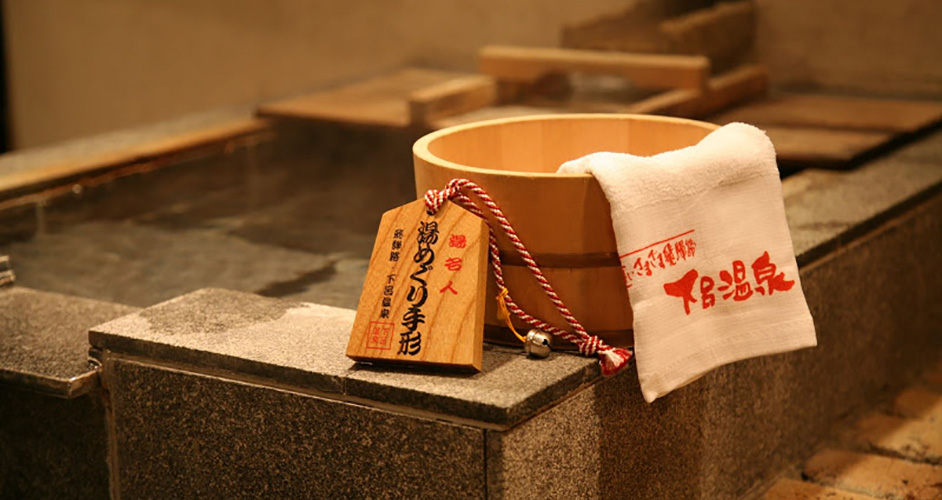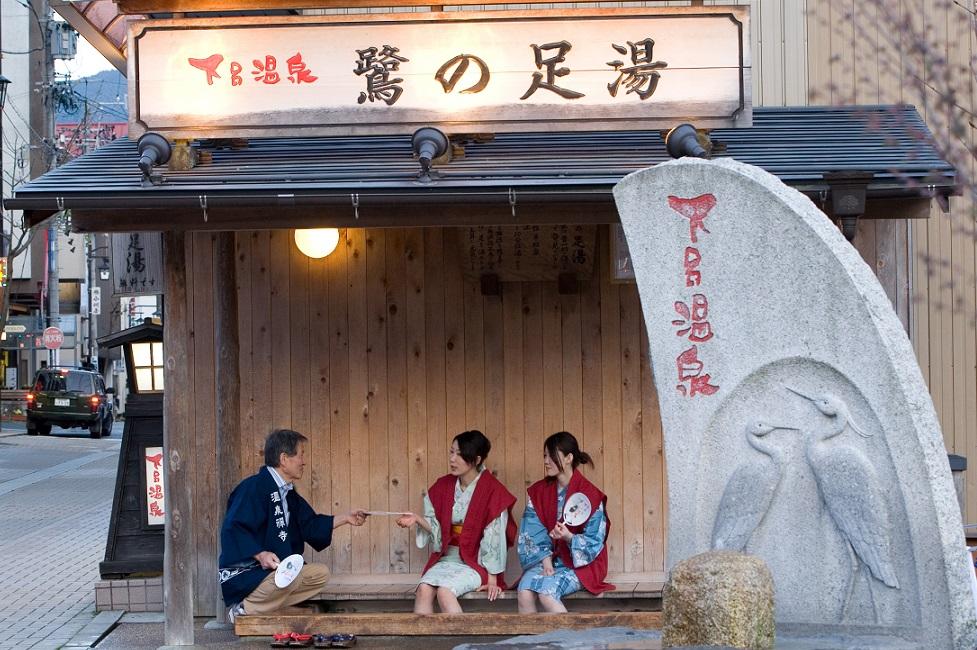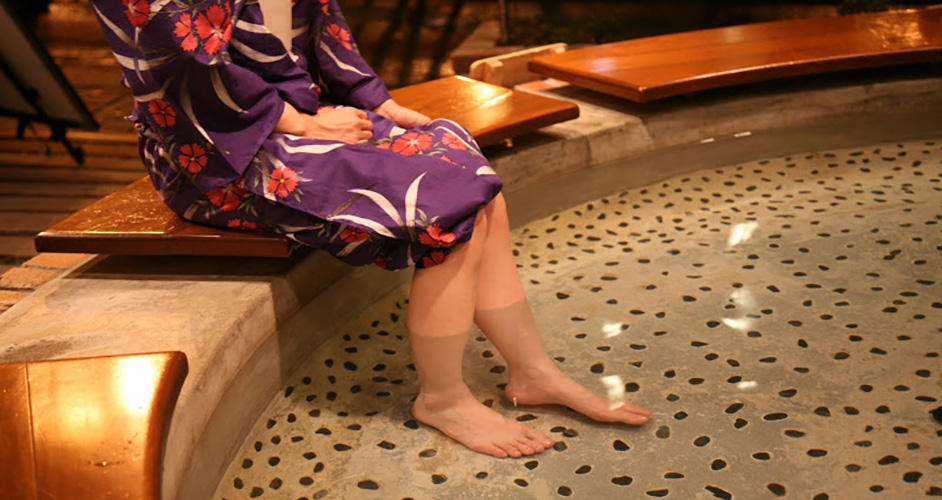Explore Gero Onsen, a Historical Hot Spring Haven
Gero Onsen, located in Gifu Prefecture, is one of Japan's most renowned hot springs, celebrated alongside Arima and Kusatsu as one of the "Three Famous Springs of Japan." This legendary hot spring is situated in the picturesque Hida River basin and lauded as one of the country's top three hot springs since the Muromachi period (1336-1573).
Known for its rejuvenating waters and scenic surroundings, Gero Onsen promises a blend of relaxation and cultural exploration. The charming resort town of Gero Onsen beautifully blends the lively energy of its bustling entertainment district with the serene ambiance of a traditional mountain village.
Experience Gero Onsen's blend of historical charm, therapeutic waters, and scenic beauty. Whether you're soaking in the silky springs, exploring cultural sites, or savoring local cuisine, Gero Onsen promises a memorable retreat for all.
Historical Significance
The origins of Gero Onsen date back over 1,000 years. According to legend, Yakushi Nyorai (the Buddha of Healing) transformed into a white heron to guide villagers to the hot springs by healing its wounds in the Hida River. This legendary discovery has been cherished through centuries, earning Gero a place in historical texts and praises from renowned figures such as the Edo-period Confucian scholar Hayashi Razan.

Hot Springs
Noteworthy Bathhouses
-
Gero Onsen: Known for its silky, alkaline waters, Gero Onsen is famed for its skin-beautifying effects, often referred to as "Bijin no Yu" (Beautiful Women's Bath). The high pH levels provide a soap-like effect, leaving the skin smooth and refreshed.
-
Funsenchi: Located along the Hida River, this open-air hot spring is a symbol of Gero Onsen. Though direct bathing is now prohibited, visitors can still touch the spring and take memorable photos.
-
Shirasagi no Yu: This facility, housed in a Western-style white building, offers indoor cypress baths and a rest area. Its prominent Venus footbath at the entrance is a unique attraction.
-
Kou no Yu: A public bath attached to a ryokan, Kou no Yu features a variety of baths and is ideal for a casual visit.
-
Onsen Museum: Located in the heart of the hot spring district, this museum offers insights into the history and science of hot springs. It features unique footbaths and walking baths, making it an educational and relaxing stop.
Nearby Hot Springs
- Nigori Gensen: Known for its milky, carbonated waters, this high-altitude hot spring near Mt. Ontake offers a remote, rustic bathing experience surrounded by nature.
- Yunoshima Onsen: A quiet, historic hot spring village offering carbonated baths and renowned for its medicinal drinking waters.
Accommodation and Dining
Gero Onsen offers a variety of accommodations, from traditional ryokan to modern hotels, all providing access to the famed hot spring waters. Visitors can enjoy local delicacies, including Hida beef and river fish, at numerous restaurants and food stalls throughout the town.

Access and Transport
-
Getting to town: Gero Onsen is easily accessible via JR Takayama Line, with the station located conveniently close to the main hot spring area. For those driving, the town is well-connected by major highways, with ample parking facilities available.
-
Rental Cycles: available at Gero City Tourist Information Center for ¥1000 per day from 9 am till 5 pm.
Sightseeing Spots
Gero Onsen Gassho Village
A recreated traditional village featuring gassho-zukuri houses, the village includes a footbath where visitors can unwind after exploring the historical exhibits.
Gero Onsen Shrine
A local shrine dedicated to the hot springs' protective deities, offering a spiritual respite amid the thermal waters.
Ideyu Asaichi
Ideyu Asaichi is a local market which offers many reasonable local items such as pickles, local liquors, handicrafts, etc. from the beginning of March to the beginning of December.
Shimono Koshindo (One of Japan's Three Great Koshindo Temples)
Shimono Koshindo Temple in Nakatsugawa City, Gifu Prefecture, is one of Japan's three great Koshindo temples. Established during the Kamakura period by monk Mongaku at the recommendation of Minamoto no Yoritomo, it houses a revered statue. The main hall was built in 1778.
- Address: Shimono, Nakatsugawa City, Gifu Prefecture, 508-0202
- Website: Nakatsugawa City
Kashimo Meijiza
Kashimo Meijiza, a traditional theater built by villagers in 1894, is a valuable cultural asset showcasing the development of rural playhouses in the Tono region of Gifu Prefecture. Guided tours, which include backstage areas and actor dressing rooms, are available by reservation.
- Address: 4793-2 Kashimo, Nakatsugawa City, Gifu Prefecture, 508-0421
- Website: Meijiza
Kashimo Osugi (Giant Cedar)
Behind the Jizo Hall in Kashimo stands a giant cedar tree estimated to be over a thousand years old. It measures 13 meters in circumference and 30.8 meters in height. Legend has it that Minamoto no Yoritomo planted an inverted branch here, which grew into this mighty tree.
- Address: Ikemori, Kashimo, Nakatsugawa City, Gifu Prefecture, 508-0421
- Website: Nakatsugawa City
Iwamura Rural Scenery Walk
Iwamura’s rural landscape, awarded "Japan's Best Rural Landscape" in 1989, features traditional farmhouses with tiled roofs and white walls scattered among rolling hills and mountains. It is a beautiful area to explore.
- Contact: Ena City Tourism Association Iwamura Branch
- Address: 263-2 Iwamura, Ena City, Gifu Prefecture, 509-7403
- Website: Iwamura
Kakamigahara Aerospace Museum
Reopened on March 24, 2018, this museum features a 1.7 times larger exhibition area, including displays of the "Hien" and "Zero Fighter." It is one of Japan's premier aerospace museums.
- Address: 5-1 Shimogiri-cho, Kakamigahara City, Gifu Prefecture, 504-0924
- Website: Sorahaku
Japan Taisho Village
A cultural facility preserving the spirit and ambiance of the Taisho era (1912-1926) with various historical buildings and museums.
- Address: 1884-3 Akechi-cho, Ena City, Gifu Prefecture, 509-7731
- Website: Taisho Village
Feather Museum
This museum in Seki City, Gifu, showcases over 10,000 pieces related to bladed tools and has interactive exhibits about the history and culture of cutlery.
- Address: 1-17 Hinode-cho, Seki City, Gifu Prefecture, 501-3873
- Website: Feather Museum
Akechi Railway
This local railway, with over 30 years of history, offers various events, including dining cars serving seasonal dishes and bicycle train rides.
- Website: Akechi Railway
Mosaic Tile Museum
Located in Tajimi City, known for its tile production, this museum provides comprehensive information on tiles, including historical and contemporary exhibits, and offers hands-on workshops. Designed by architect Terunobu Fujimori, the building itself is a work of art.
- Address: 2082-5 Kasahara-cho, Tajimi City, Gifu Prefecture, 507-0901
- Website: Mosaic Tile Museum
Hyakunen Park Iris Festival
This park in Seki City features 100 varieties and 20,000 plants of irises. The "Iris Festival" is held in mid-June.
- Address: 1966 Koyana, Seki City, Gifu Prefecture, 501-3941
- Website: Hyakunen Park
Takayama Jinya and Old Streets
Takayama Jinya, once a local government office during the Edo period, is the only remaining example of its kind in Japan. Nearby, the old streets of Takayama feature traditional sake breweries, shops, and cafes, where visitors can enjoy local delicacies like Hida beef sushi and mitarashi dango.
- Address: 1-5 Hachiken-cho, Takayama City, Gifu Prefecture, 506-0012
- Website: Takayama Jinya

Access
Accessing Gero Onsen, Gifu from Nagoya or Tokyo
From Nagoya
-
By Train:
- Take the JR Limited Express Wide View Hida from Nagoya Station to Gero Station. This direct train journey takes approximately 1 hour and 30 minutes.
-
By Car:
- Drive from Nagoya to Gero Onsen via the Chuo Expressway and Route 257. The trip takes about 2 hours, depending on traffic.
From Tokyo:
-
By Train:
- Take the JR Tokaido Shinkansen from Tokyo Station to Nagoya Station, which takes about 1 hour and 40 minutes.
- Transfer to the JR Limited Express Wide View Hida at Nagoya Station and continue to Gero Station, which takes approximately 1 hour and 30 minutes.
- Total travel time is around 3 hours and 30 minutes.
-
By Bus:
- Long-distance buses from Tokyo to Gero Onsen are available but less frequent. This option might take longer, around 6 to 7 hours.
find your next getaway
Kumamoto
2 adults